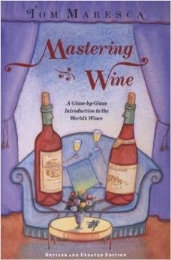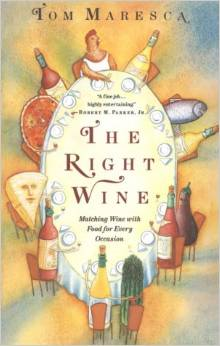If you’re a committed wine lover and need your fix every day, it’s a great advantage to live in New York City. The variety of fine wine available is unmatched anywhere in the world, and shopping is a snap. Let it sleet and storm outside: You can sit at your desk – perhaps sipping a glass of wine – and let your search engine (Wine-Searcher is a good one) investigate for you. That’s especially handy if you know more or less the kind of wine you’re seeking.
Even handier is the search service provided by several of the larger retail shops in New York, which allows you to rummage through their entire inventory by any of several different criteria.
.
.
I’m especially fond of one that Astor Wine and Spirits offers: searching by price range. That’s useful for any number of reasons, but I especially like that it offers me things I might not have thought of, wines outside my usual Italian and French go-to categories. We all get into ruts: This helps push me out of them. Twenty minutes of online browsing and I can put together a case of 12 different whites and another of 12 different reds at prices I like – say between $10 and $20 for everyday wines – and they will probably be delivered within 24 hours. For an aging wino, it doesn’t get much easier.
.
.
Let me be clear: When I say everyday wines, I mean every day. Diane and I have wine with dinner every night. All right, maybe once or twice a year we have beer, but 99 times out of 100 we opt for wine – and like most people in this galaxy, we can’t afford to drink great wine every time. Not that I haven’t done my best to raise the level of our daily bottle by, for decades now, buying wines young and unready but at reasonable prices and squirreling them away for as long as I could.
Besides, it’s not just wine we care about: It’s also and especially what Italians call the abbinamento – coordinating the wine with the food it accompanies. That’s crucial to making an everyday dinner something to relish. You have to pay attention to the way the wine and the food mesh. Much as I love mature Barolo and Barbaresco, I don’t want to drink them with a dish of frankfurters and beans. It’s disproportionate – and besides, good franks and beans are estimable in their own right and deserve a decent wine that works well with them. Don’t send a Brunello to do what a Bardolino can do better, don’t open a Beaune Premier Cru where a Beaujolais Villages is what’s needed.
 (Incidentally, the above examples illustrate the first principle I laid out centuries ago in The Right Wine, my book about wine and food matching: Scale is crucial. I feel even more strongly about the second principle declared in that book: Acidity is what makes a wine food-friendly. But that’s a topic for a different post. End of digression.)
(Incidentally, the above examples illustrate the first principle I laid out centuries ago in The Right Wine, my book about wine and food matching: Scale is crucial. I feel even more strongly about the second principle declared in that book: Acidity is what makes a wine food-friendly. But that’s a topic for a different post. End of digression.)
Now, just what sort of everyday wines am I talking about? Well, here’s the case of white wines, all under $20, that I recently purchased, most of which I tasted first as an aperitif (we all need to keep up our strength while cooking) and then with dinner.
Alsace Auxerrois Leon Manbach 2017 – Very pleasant, light, but substantial enough to handle a choucroute. Nice white-flower and mineral nose, round, but with enough acidity to work with food. Quite decent.
Alvarinho Couto de Mazedo 2016 (Vinho Verde) – Very nice Albariño, crisp, fresh, aromatic: Good aperitif, fine with fish.
Alvarinho Regueiro 2016 (Vinho Verde) – quite fine: rounder and fuller than the preceding wine, more dinner wine than aperitif. Excellent with a roasted orata (sea bream).
Jean-Paul Brun Beaujolais Blanc 2017 – excellent Beaujolais producer. Nice unwooded Chardonnay, with round fruit and great freshness. Very enjoyable.
.
Classic Domaine de l’Ecu Muscadet 2016 – This is a Muscadet producer I normally like very much, but this bottle was a bit of a disappointment. Drunk by itself, it tasted too much of oak. Food wiped that out to some extent, but it never rose to the level of crispness and sharpness I had hoped for.
De Cranne Bordeaux Sec 2016 – Should have been really interesting (the blend is 40% Sauvignon gris, 25% Muscadelle, and 35% Semillon), but turned out to be somewhat coarse and disappointing.
Gavi di Gavi Podere Merlina 2017 – Not a big, round Gavi, but a lighter-bodied, mineral-inflected example, with a marked and enjoyable citrus bite. Fine as aperitif and with lighter fare.
Meyer-Fonné Alsace Gentil 2016 – A lovely Alsace wine, so floral that the initial taste seemed German, but it rounded beautifully with a pheasant pâté and roasted chicken thighs.
.
Ribolla Gialla Ronchi di Cialla 2017 (Friuli Colli Orientali) – quite fine and characteristic. Stood up beautifully to a choucroute garnie, and I don’t know how much more you can ask of a white wine.
Rioja Blanca Real Rubio 2017 – A bit disappointing: old-fashioned, slightly oxidized white, not unpleasant but with no charm.
Timorasso Colli del Timorasso Ricci 2014 – A lovely light Timorasso, soft-bodied but with sufficient acid; floral aroma and delicate palate of dry pear and apricot. Very enjoyable.
Weszeli Grüner Veltliner Langenlois 2017 – Very good and characteristic Grüner, with nice balance, body, and minerality. Partnered quite nicely with Chinese dumplings and home-made egg foo young. Bright, light on palate.
.
I grant you that this is not an earthshakingly exotic list of wines: Had I wished, I could have cast a much wider net. But these are the kind of wines I like, so this time around I stuck with them. Others, of course are free to be as experimental as they wish: There were 88 other wines on the list I was choosing from. Have fun!













